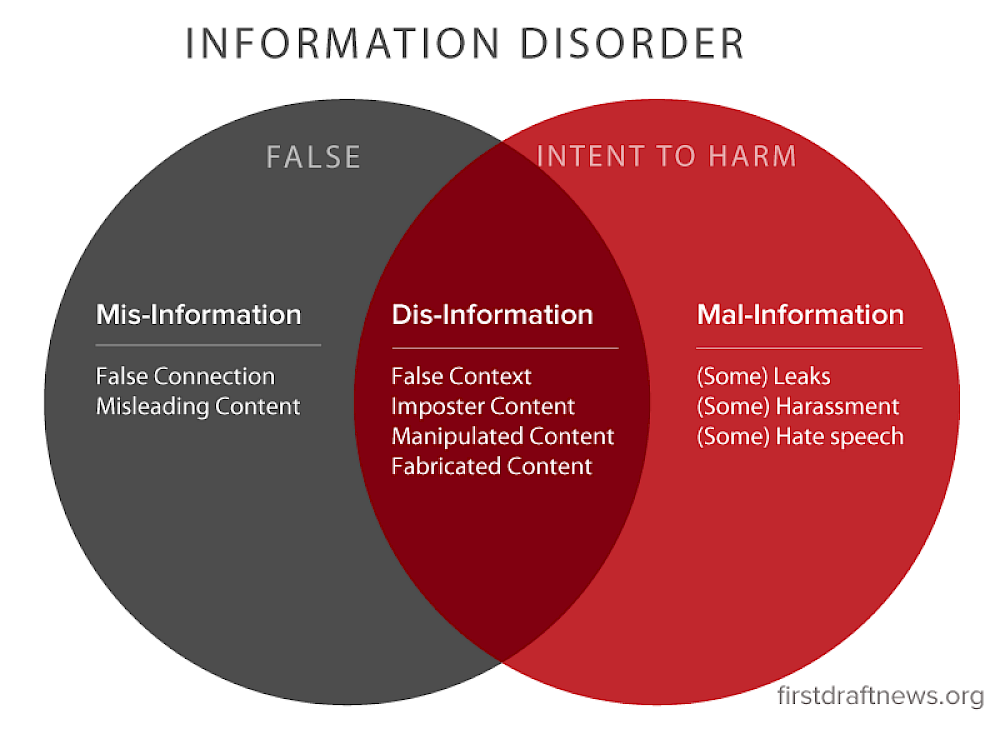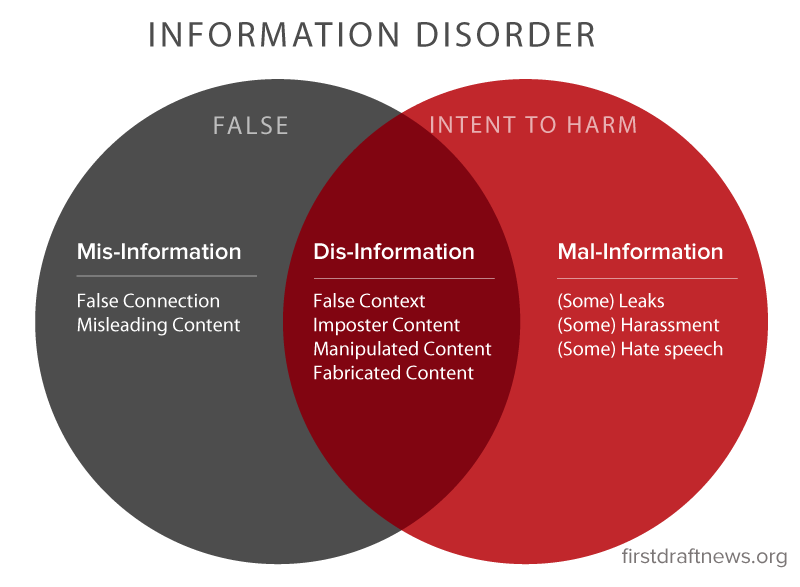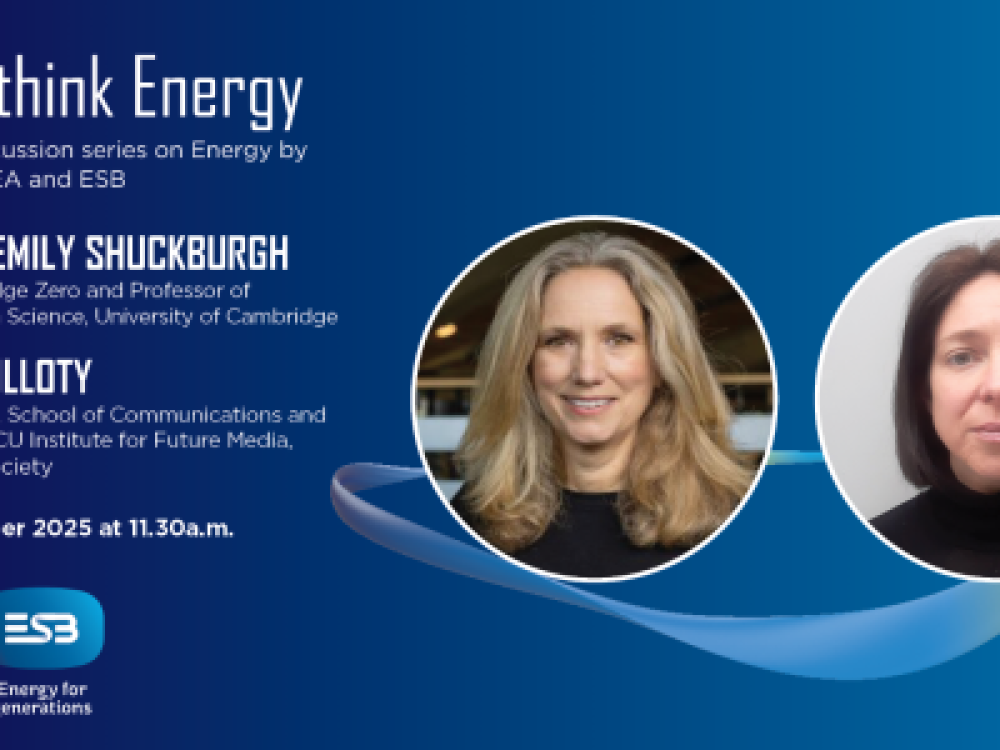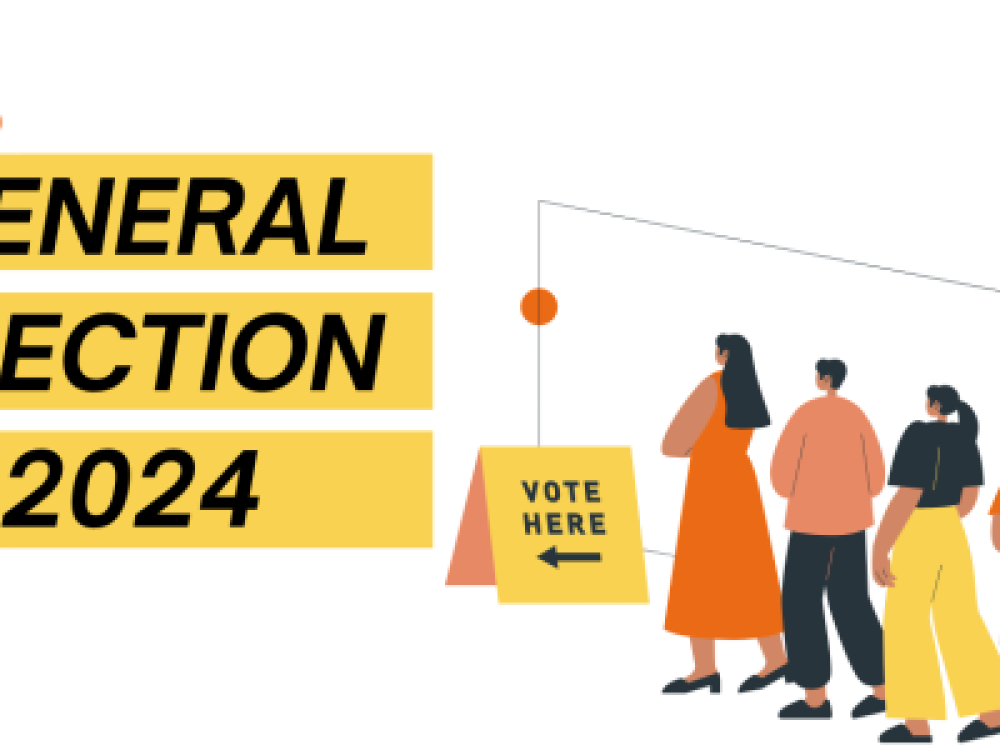A new First Draft report for the Council of Europe lays out a new definitional framework for thinking about information disorder, provides an overview of current responses and summarizes key academic studies on how people consume information, particularly fact-checks and debunks. It ends with thirty-five recommendations, targeted at technology companies, national governments, media organizations, civil society, education ministries and funding bodies.
The report describes the differences between the three types of information using dimensions of harm and falseness:
- Mis-information is when false information is shared, but no harm is meant.
- Dis-information is when false information is knowingly shared to cause harm.
- Mal-information is when genuine information is shared to cause harm, often by moving private information into the public sphere.
The author recommends thinking about the agents, messages and interpreters of information disorder as separate elements. This is important because even small differences in any of these elements will necessitate significantly different solutions. For example, we argue those who create mis-, dis- or mal-information do so for four main motivations—financial, political, social and psychological. Solutions that target financial motivations requires careful consideration on their own. Lumping together those who are financially motivated by profits with those who seek political gains is unhelpful.
Rather than simply thinking about communication as the transmission of information from one person to another, the report argues that communication plays a fundamental role in representing shared beliefs.
It is not just information, but drama — “a portrayal of the contending forces in the world.” The most ‘successful’ of problematic content is that which plays on emotions of contempt, anger or fear. That’s because these factors drive sharing among people who want to connect with their online communities and ‘tribes’. It’s easy to understand why emotional content travels so quickly and widely – even as we see an explosion in fact-checking and debunking organizations – when most social platforms are engineered for people to publicly ‘perform’ through likes, comments or shares.
Read the full report








